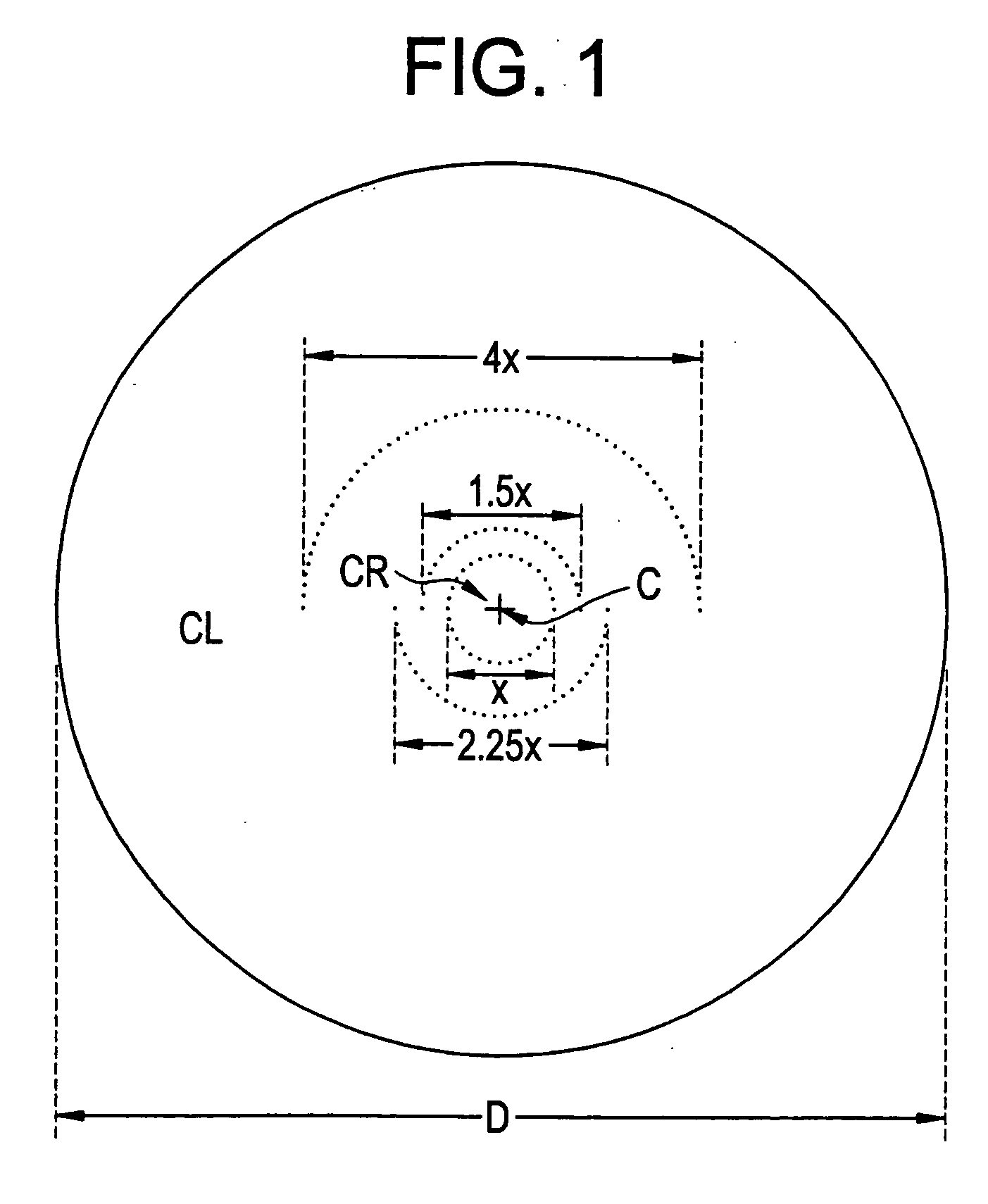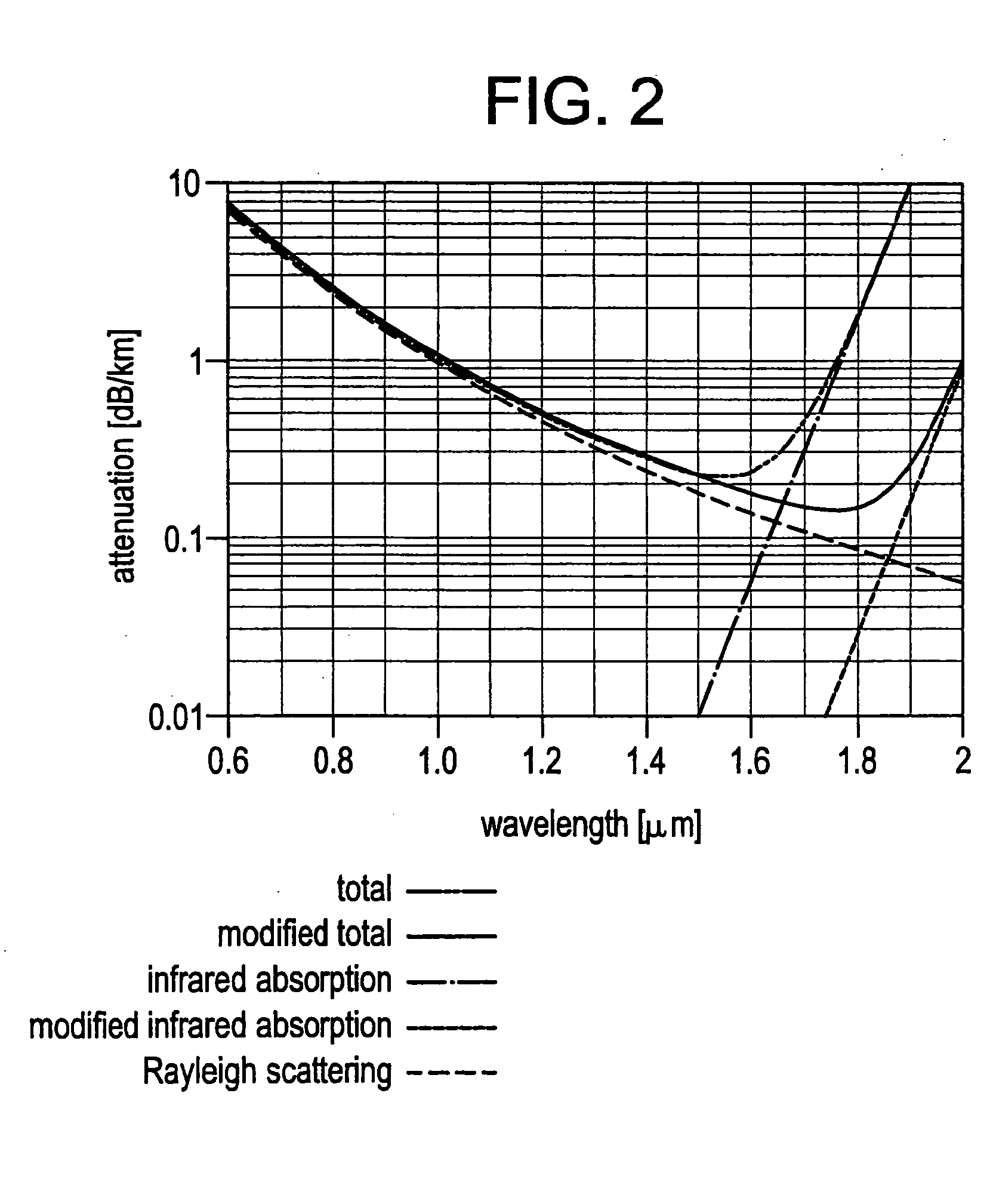Isotopically altered optical fiber
a technology of optical fiber and isotope, applied in the direction of glass deposition burners, instruments, manufacturing tools, etc., can solve the problems of loss, net reduction of 11 regeneration stations, etc., and achieve the effect of reducing the gain spectrum of raman
- Summary
- Abstract
- Description
- Claims
- Application Information
AI Technical Summary
Benefits of technology
Problems solved by technology
Method used
Image
Examples
Embodiment Construction
[0030]FIG. 1 illustrates one embodiment of the invention comprising a silica optical fiber having core region CR surrounded by a cladding CL, wherein the core region has been enriched with one of the heavier isotopes of either oxygen or silicon. The stable isotopes of silicon have atomic weights of 28, 29, and 30 with natural abundances of 92.23 percent, 4.67 percent, and 3.10 percent, respectively. In the case of oxygen, the stable isotopes have atomic weights 16, 17, and 18, with abundances of 99.762 percent, 0.038 percent, and 0.2 percent, respectively. In both cases, the most abundant isotope constituting silica (SiO2) are the lightest stable isotopes. Stable isotopes are not radioactive and are stable over time and temperatures. The chemical behavior of the aforementioned isotopes are identical to their more abundant, lighter counterparts. Hence, as described in detail hereinafter, the chemical substitution of heavier isotopes such as silicon-30 or oxygen-18 for their lighter c...
PUM
| Property | Measurement | Unit |
|---|---|---|
| Temperature | aaaaa | aaaaa |
| Fraction | aaaaa | aaaaa |
| Fraction | aaaaa | aaaaa |
Abstract
Description
Claims
Application Information
 Login to View More
Login to View More - Generate Ideas
- Intellectual Property
- Life Sciences
- Materials
- Tech Scout
- Unparalleled Data Quality
- Higher Quality Content
- 60% Fewer Hallucinations
Browse by: Latest US Patents, China's latest patents, Technical Efficacy Thesaurus, Application Domain, Technology Topic, Popular Technical Reports.
© 2025 PatSnap. All rights reserved.Legal|Privacy policy|Modern Slavery Act Transparency Statement|Sitemap|About US| Contact US: help@patsnap.com



